Exercise-Induced Asthma: Causes, Signs, And Treatment
Understand when breathlessness while exercising is worrisome and demands attention.
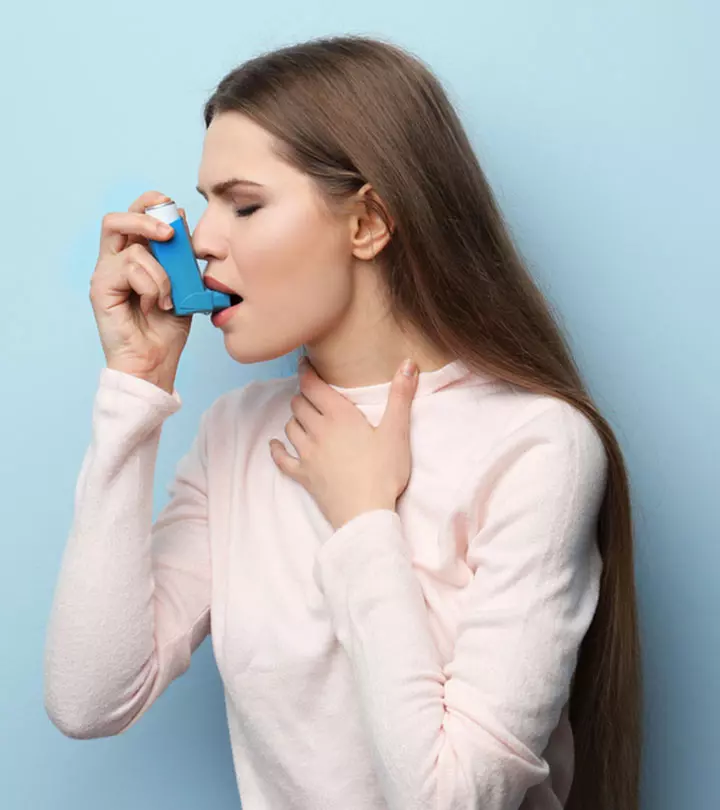
Image: Shutterstock
Many people experience exercise-induced asthma. It usually occurs after vigorous and prolonged exercise, which may reduce airflow to the lungs. This triggers bronchoconstriction (EIB), also known as exercise-induced asthma. About 40-90% of people with asthma experience it. However, kids and adults without a previous history of asthma may also experience it (1).
Don’t let that stop you from staying active and exercising regularly. With the right preventive measures and treatment, you can exercise safely. Read on to know everything about exercise-induced asthma, which exercises are safe to do, and safety precautions to take. Scroll down!
In This Article
What Is Exercise-Induced Asthma?
Asthma triggered due to prolonged or vigorous exercise is known as exercise-induced asthma or exercise-induced bronchoconstriction. It is characterized by air passage constriction, causing breathing issues. It is usually triggered after 5-10 minutes of vigorous activity or within 5-20 minutes of exercising. As a result, kids and adults may find it difficult to do certain activities and exercise (including high-intensity workouts) (1).
If you or your kid is showing signs of exercise intolerance and avoidance with breathing difficulty, below are a few reasons for it.
Key Takeaways
- Inhaling dry and cold air through the mouth, which usually happens while exercising, leads to constriction of the airway and may cause asthma.
- Allergens in the air, viral infections, and inflammation are also potential asthma triggers.
- Using the inhaler 15-30 minutes before exercising and covering the nose and mouth while exercising in cold areas is advised.
Causes Of Exercise-Induced Asthma
When we breathe through our nostrils, the nasal cavity warms and humidifies the air. However, during exercise, people may breathe through their mouths, inhaling dry and cold air. The air passage muscles react to this change in temperature and air humidity by constricting and narrowing the airway.
Pollen or other allergens in the air, inflammation, and viral infection may also trigger exercise-induced asthma (1). Here are the typical signs and symptoms of asthma caused due to exercise.
Symptoms Of Exercise-Induced Asthma
Watch out for the below symptoms of exercise-induced asthma:
- Wheezing
- Coughing
- Shortness of breath
- Tightness in chest
- Sore throat
- Reduced endurance
- Unusual fatigue
- Upset stomach
If you experience more than one symptom right after 5-10 minutes after exercise or during exercising, stop immediately. You may resume if you feel better. However, if it recurs, consult a doctor.
 Trivia
TriviaThankfully, exercise-induced asthma is treatable. In the following section, we discuss the various treatments available for exercise-induced bronchoconstriction. Take a look.
Treatment For Exercise-Induced Asthma
Experiencing exercise-induced asthma does not mean you have to stop exercising. Your doctor will prescribe inhalers to dilate your airway, making it easier to breathe while exercising. Additionally, they may prescribe short-acting beta-2 agonists, widely used asthma medications. The doctor may prescribe corticosteroids if you have inflammation in the airway (2).
Use the inhaler 15-30 minutes before exercising to prevent an asthma attack. Take the prescribed medications regularly. If you have asthma and know that exercising may aggravate your condition, educate your family, friends, and exercise instructor to help you with the first aid if you need it. Scroll down to know what you or anyone who attends to you can do.
First Aid For Exercise-Induced Asthma
There are four steps in the exercise-induced asthma first aid (3):
- Step 1: Make the person sit upright and try to calm and reassure to help them.
- Step 2: Ask them to take four puffs from the inhaler.
- Step 3: Wait for 4 minutes to see if the symptoms subside.
- Step 4: Call an ambulance immediately if the symptoms don’t subside.
Asthma attacks are unpredictable. Ensure you know about a few home remedies for asthma, such as essential oils, garlic, ginger, onions, etc., so that you can help manage symptoms more effectively and quickly. That is why taking precautions is crucial to prevent exercise-induced asthma symptoms. Here are a few tips.
Precautions To Prevent Exercise-Induced Asthma
- Always warm-up for 10-15 minutes before exercising.
- Use your inhaler about 15-30 minutes before exercising.
- Cover your mouth and nose when exercising in cold and dry weather.
- Avoid outdoor exercises during spring to avoid pollen allergies.
- Exercise indoors to avoid environmental allergens.
- Carry a short-acting inhaler for emergency purposes.
- Avoid swimming in chlorinated swimming pools.
- Breathe through your nose while exercising.
- Avoid changing your exercise routine drastically.
- Do cool-down stretches for 10-20 minutes after exercising.
Alex Hutchinson, a sportsperson and a blogger describes his experience of getting diagnosed with exercise-induced asthma and how he managed it. He shares that two out of ten bike races he participated, in were interfered with by exercise-induced asthma. He states that, “As for treatments, there are many suggestions from Albuterol inhalers to corticosteroids to the Buteyko breathing method. The one that works best for me is running intervals. On the day of the event I need to open my lungs up, so to speak, to lessen the chance for an episode (i).”
 Trivia
TriviaApart from taking preventive measures, you may also switch to low-risk exercises – like the ones listed below.
Safe Exercises You Can Do
- Brisk Walking: This low-impact aerobic exercise gets the heart pumping and burns a good number of calories. Slow down or stop when you feel out of breath. You may do it on a treadmill or outdoors. It is a great way to keep in shape.
- Dancing: Dancing is a fun way to burn calories and get your serotonin levels high. Dance forms like cha-cha, tango, and contemporary help you stay physically active and learn a new skill. Make sure you do not stand directly under an AC vent.
- Cycling: Cycling is a great way to burn calories and keep your legs in shape. However, avoid dry and rocky trails. Cover your nose and mouth (if the air is too cold). Alternatively, you can buy an exercise bike and exercise while enjoying your favorite playlist!
- Water Exercises: Choose a pool that has chlorine-free and lukewarm water. You may swim or do low-impact aquatic exercises to strengthen and tone your body.
- Resistance Training: Resistance band training exercises improve muscle tone. The bands come in various thicknesses, and you can do full-body exercises and burn calories anywhere, anytime.
- Strength Training: Strength training with dumbbells, barbells, kettlebells, and a Smith machine can help improve muscle tone and power. You may train at the gym or buy a few weights at home.
- Breathing Exercises: For exercise-induced asthma, focusing on your breath can make a big difference. Simple techniques like diaphragmatic breathing, where you inhale slowly through your nose, allowing your belly to expand, and exhale through pursed lips, may enhance air distribution in your lungs. These exercises can be practiced anytime to strengthen your respiratory muscles.
- Pilates: The low-impact nature of Pilates makes it gentle on the respiratory system, reducing the risk of triggering asthma symptoms during exercise. Engaging in Pilates regularly may not only strengthen your core but also promote better breathing control.
- Hiking Exercises: Similarly, hiking provides a good avenue for managing exercise-induced asthma. The rhythmic nature of inhaling and exhaling and moderate intensity may strengthen your respiratory muscles in an outdoor setting.
- Sports: Playing a sport is a great way to burn calories, stay fit, improve coordination, and build great friendships. Badminton, tennis, cricket, squash, etc., are great for improving overall fitness. But you must avoid certain sports unless you have a team of coaches and medics to attend to you during the game. In the following section, we discuss which sports to avoid. Scroll down.
Which Sport Commonly Causes Asthma Symptoms?
You can play and exercise with asthma or exercise-induced asthma and even participate in the Olympics. However, if you are not training as an athlete and do not have the support that elite athletes have, it is best to avoid the following sports:
- Marathon
- Triathlon
- Skiing
- Ice hockey
- Football
Exercise-induced asthma is a common deterrent to exercise among those with this respiratory condition. However, taking a few precautions can certainly help keep this condition in check and enable you to continue with your fitness regimen. They include warming up enough, using an inhaler 15-30 minutes before an exercise session, avoiding exercising outdoors, and breathing through the nose. Moreover, brisk walking, dancing, cycling, and resistance training are deemed to be ideal for those with asthma, so include them in your fitness regimen. However, keep away from marathons, triathlons, ice hockey, and football.
Frequently Asked Questions
What happens if exercise-induced asthma is left untreated?
When left untreated, exercise-induced asthma may result in the narrowing of air passages that causes serious health concerns. Hence, it is important to have it treated at the earliest.
How long can exercise-induced asthma last?
It may start while you are exercising or 10-15 minutes after you have exercised, and may last for about an hour or more if left attended.
Can exercise-induced asthma cause death?
If not treated on time, asthma, however triggered, may turn fatal.
Will losing weight help treat exercise-induced asthma?
Yes, losing weight can help manage asthma and its symptoms better (1).
Can exercise-induced asthma get worse?
It may get worse if the weather is cold and dry as it makes breathing difficult in the first place.
Recognizing the signs and exploring appropriate treatments for exercise-induced asthma is crucial for managing this condition effectively. Listen to a doctor’s perspective regarding the issue by watching the video below.
References
Articles on StyleCraze are backed by verified information from peer-reviewed and academic research papers, reputed organizations, research institutions, and medical associations to ensure accuracy and relevance. Read our editorial policy to learn more.
- Exercise Induced Asthma
https://www.ncbi.nlm.nih.gov/books/NBK557554/ - Asthma
https://www.ncbi.nlm.nih.gov/labs/pmc/articles/PMC6157154/ - Asthma Attacks
https://www.nhs.uk/conditions/asthma/asthma-attack/
(i) Racing with Exercise Induced Asthma
https://ahbmx.blogspot.com/2015/09/racing-with-exercise-induced-asthma.html
References:
Read full bio of Dr. Zeel Gandhi
Read full bio of Ravi Teja Tadimalla
Read full bio of Aparna Mallampalli






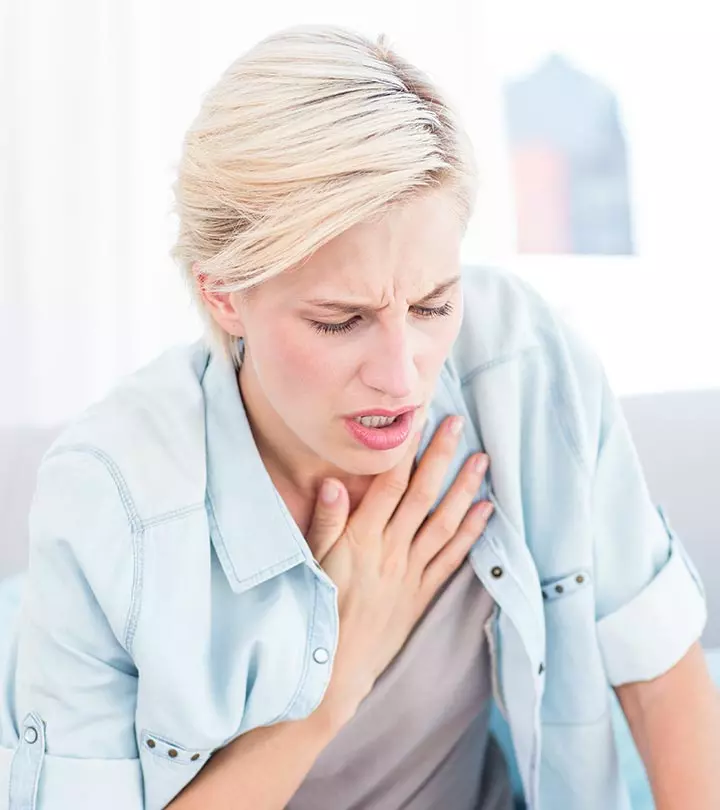




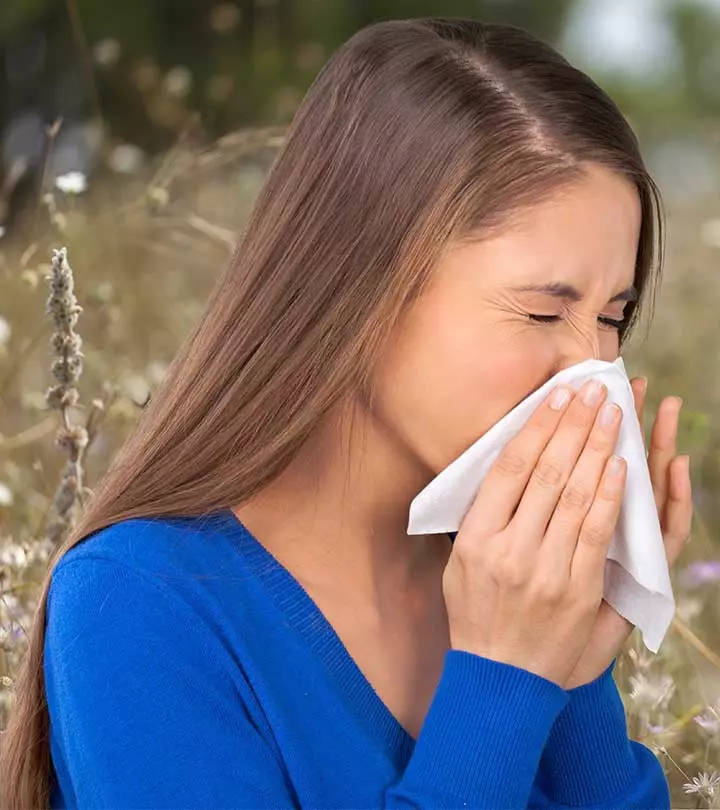




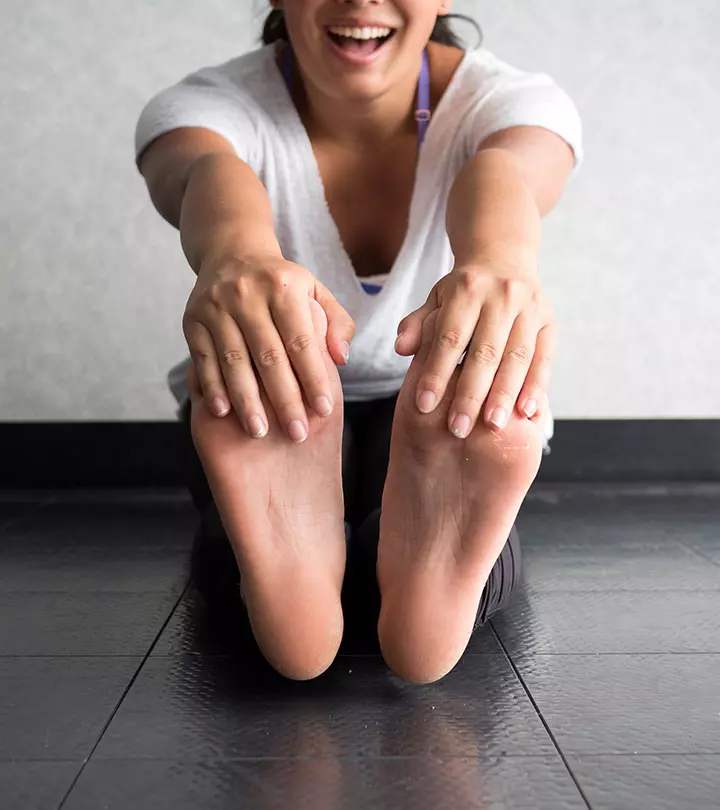
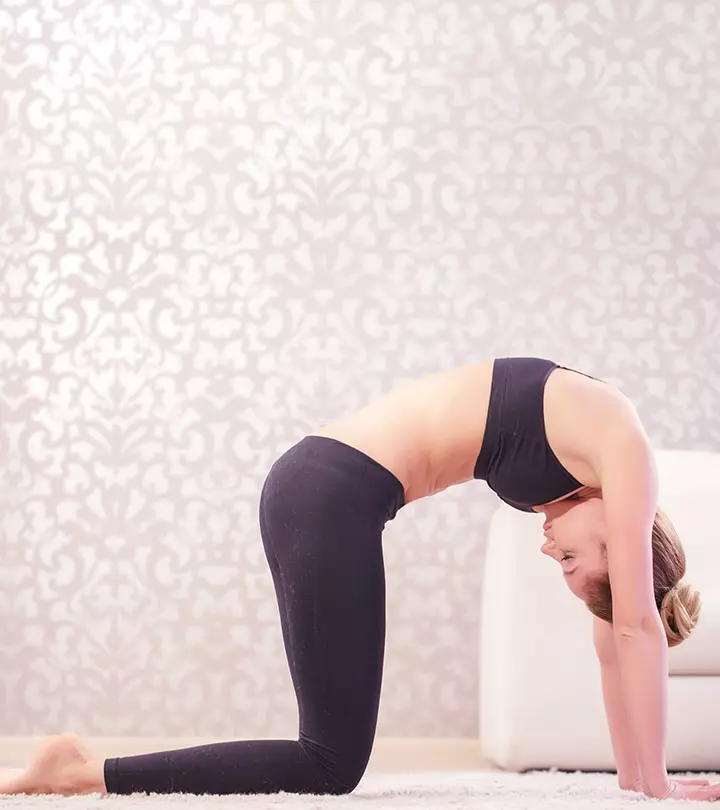









Community Experiences
Join the conversation and become a part of our empowering community! Share your stories, experiences, and insights to connect with other beauty, lifestyle, and health enthusiasts.